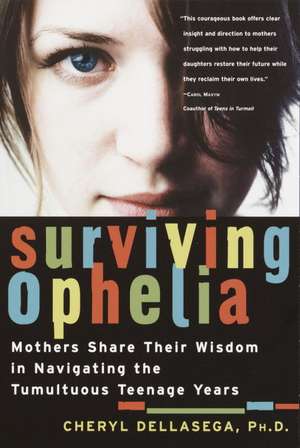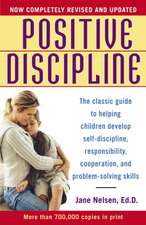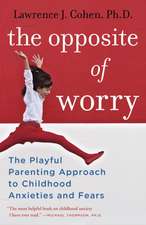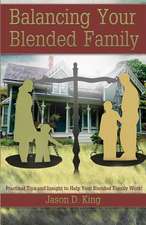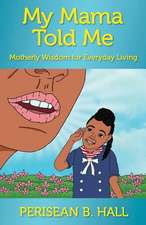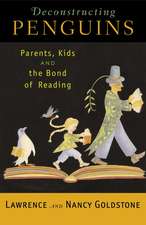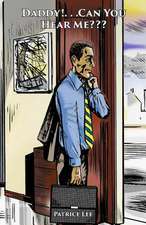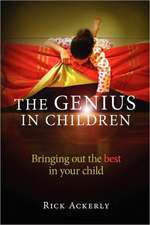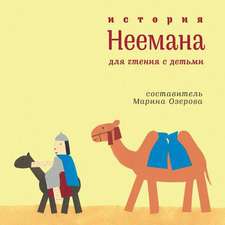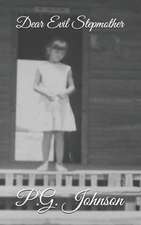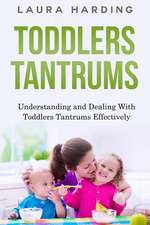Surviving Ophelia: Mothers Share Their Wisdom in Navigating the Tumultuous Teenage Years
Autor Cheryl Dellasegaen Limba Engleză Paperback – 30 sep 2002
Drawing on the experiences of scores of mothers and daughters, Dellasega takes a hard look at the lives of girls in crisis—once happy, carefree children who are now struggling with eating disorders, unplanned pregnancies, substance abuse, and severe mental problems. These are stories of girls on the edge, and mothers who are trying everything to save them. Yet even in the most desperate situations, Dellasega hears the same clear message: the key to survival is the support and the understanding of others going through the same thing.
Surviving Ophelia is a book that provides the community that mothers of troubled teenage girls need more than anything. Powerful and heartfelt, this book captures both the pain and the strength of mothers who are living with the daily challenge of raising teenage daughters today.
Preț: 100.98 lei
Nou
Puncte Express: 151
Preț estimativ în valută:
19.32€ • 20.15$ • 16.06£
19.32€ • 20.15$ • 16.06£
Carte disponibilă
Livrare economică 27 februarie-13 martie
Preluare comenzi: 021 569.72.76
Specificații
ISBN-13: 9780345455383
ISBN-10: 034545538X
Pagini: 270
Dimensiuni: 141 x 208 x 15 mm
Greutate: 0.22 kg
Editura: BALLANTINE BOOKS
ISBN-10: 034545538X
Pagini: 270
Dimensiuni: 141 x 208 x 15 mm
Greutate: 0.22 kg
Editura: BALLANTINE BOOKS
Notă biografică
“This courageous book offers clear insight and direction to mothers struggling with how to help their daughters restore their future while they reclaim their own lives.”
—CAROL MAXYM
Co-author of Teens in Turmoil
“Thank you [Cheryl Dellasega] for showing mothers everywhere that we are not alone in our struggle to help our daughters. . . . Surviving Ophelia is mesmerizing and the truth of its stories resonates.”
—SUE WELLMAN, President
The Ophelia Project
—CAROL MAXYM
Co-author of Teens in Turmoil
“Thank you [Cheryl Dellasega] for showing mothers everywhere that we are not alone in our struggle to help our daughters. . . . Surviving Ophelia is mesmerizing and the truth of its stories resonates.”
—SUE WELLMAN, President
The Ophelia Project
Extras
There are no pictures of me cuddling Ellen to my heart for the first time in the delivery room, but it doesn’t matter. Every detail is clear in my mind: her perfect, round face, the fuzz of soft gold hair crowning the very top of her head, and her dazed dark eyes, squinting against the glare of the bright, sterile lights.
“You are the daughter I have always dreamed of,” I whispered, resting my cheek against the smooth skin of her forehead. Lying there with her on my chest, I had a vision of the future and all the things she would accomplish. Like a movie on fast-forward, I saw her doing well in school, having loyal friends, and being a kind person. She would go to a good college and would someday make a positive difference in this world. Mostly, I pictured all the good times we would have together.
The year after her birth, 1984, was probably the happiest one of my life. I had a five-year-old son, Matt, from my first marriage, who readily adapted to his role as “big brother,” a great second husband, a job teaching at a small university that I liked, and Ellen. When our youngest son, Joe, was born eighteen months after her, I rejoiced again, thrilled she would have a sibling close to her age.
“What a pleasant baby!” was the most frequent comment I heard during Ellen’s early years. It was true—she rarely cried and had an unusual laugh that would start deep in her throat and bubble out, drawing smiles from everyone around her. When I cuddled her, she would often pat my back while I patted hers. The developmental tasks I labored over with Matt and Joe came easily to her: she even decided to stop sucking her thumb on her own, doing so in only a few weeks.
My prediction about her academic abilities proved right. She loved math (“There are always right answers”) and brought home A’s in that and other major subjects. All the sports her brothers tried, she tried, as well as dance lessons. Swimming was the activity that stuck, partly because it helped her asthma, and partly because she was good at it. When her arm was broken in third grade, she wore a waterproof sleeve, still competed, and even finished near the top.
What touched me most about Ellen was her kindness. She (and her brothers) had a special sensitivity for kids who were handicapped or didn’t quite fit in for some reason. When holidays rolled around, she was the child who diligently saved her money and thought carefully about the gifts she would buy.
My husband and I followed all the “rules” for parenting we’d learned, providing lots of love, appropriate discipline, spiritual grounding, and security for all three children. When they were old enough, they were encouraged to be independent through summer camp experiences and flying to Chicago to visit their grandparents. They got allowances for the jobs they did around the house to promote a sense of responsibility, and we all looked forward to our traditions for Christmas and Thanksgiving. We went to church together on Sundays so faithfully our occasional absence was noted by the other members.
I wouldn’t say I was smug, but, until adolescence, I thought Ellen was going to turn out exactly as I had imagined she would back when I cradled her on the delivery room table. Unfortunately, most of my dreams got shoved aside when she hit her teens and the first of many crises began. She had barely turned fourteen when an eating disorder put a sudden end to the joyful shopping trips, meals out, and lazy evenings of watching videos at home. As her condition worsened, we stopped going to the pool to swim laps and rarely laughed together. Her grades plummeted. I was in a constant state of panic, desperate for reassurance, and afraid to face the future, searching everywhere for answers to the questions that plagued me. What had gone wrong with Ellen? How had I failed her? Would things ever return to “normal”?
I lived in a daze during the early months of Ellen’s anorexia. When my coworkers, friends, and family members asked how my daughter was doing, it was hard to know what to say: “She’s only eating about 500 calories a day”? “Her hair is falling out”? or “She lost another four pounds”? Even censored versions of what was going on with her seemed so overwhelming, I stopped telling people when she had been admitted to the hospital again or started on yet another new medication.
As the mother of a toddler, there had been more books available on parenting than I had time to read. There were recommendations for every situation I ever faced with my children—in the battered copy of Dr. Spock’s Baby and Child Care I kept for a decade, in volumes that filled an entire library shelf, or on TV shows. If I needed a second opinion, other mothers were happy to offer advice, and almost every bookstore had a section crammed with parenting literature.
The mothers I knew when Ellen’s problems began all seemed to have wonderful, well-adjusted daughters who were doing just fine. That ruled out turning to them for help. There was no comfort to be found in bookstores, either. Sure, there were dozens of books about adolescents written by professionals or parents of “successful” children, but none addressed mothers like me who were in the midst of turmoil. Ironically, we were surrounded by therapists, but there was no one who could really help. I was nearly paralyzed by shame and guilt.
Somehow, slowly, I began to meet other mothers whose daughters were struggling. Amazingly, most were women who looked and acted just like the ones I saw at the shopping mall or high school every day in my own community. Bit by bit, our stories came tumbling out in doctors’ waiting rooms, hospital corridors, grocery stores, and school functions. As if confessing to a crime, we shared our experiences in hushed voices, instantly understanding, if not the particulars of a situation, the emotional crisis it evoked.
I began to talk honestly and openly about what I was going through, and other mothers responded instantly. It would only take one question (“How are you getting through all this?”) and their answers flowed, sometimes tearful, sometimes relieved, but always honest. I came to realize that all across the country, other “invisible” families were desperately trying to help their troubled daughters with efforts that were nothing short of heroic.
One day, after being lectured by a social worker about my inadequacy as a parent, I picked up my pen in frustration and began to write. There had to be a way to sort out the complicated details surrounding my daughter’s problems, and my role in them. I thought of my volunteer work with incarcerated women, who sometimes shared the details of their broken lives with me: abandonment by one or both parents, fear of being shot while walking down the street, physical or mental abuse, or never having enough food to eat or clothes to wear.
As much as I don’t like to hear these stories, they explain why problems occur. Ellen hasn’t experienced any of these things, yet at times her future seems as bleak to me as that of some of the inmates I counsel.
As I scribbled out the beginnings of a memoir about Ellen and myself, I realized the answers were not to be found in our story alone. The academic side of me wanted to know the extent to which other teenage girls were going through such troubled times and how both they and their mothers survived.
I began an extensive campaign to solicit stories from mothers of daughters who had struggled “more than most” during adolescence. My appeal was simple: I wanted to know how women responded to their daughters’ problems. I hoped to write a book that would someday help others who were where I had once been: lost, afraid, and frantic for help.
“Do you really think mothers will write?” one editor asked me skeptically, after reading my proposal. I wasn’t sure, but with the encouragement of a wonderful agent and a belief I was meant to create this book, I persisted in asking mothers to describe their experiences, in their own words.
To reach as diverse an audience as possible, I varied the media and resources I used to solicit submissions: the Internet, print newsletters and newspapers, magazines, and fliers. My focus was groups or organizations that involved parents of troubled children, writers, women, and mothers.
As the submissions poured in (over 200, with more continuing to arrive), I realized I had many companions. The topics mothers wrote about ranged from life-threatening crises to time-limited troubles, from suicide attempts, drug abuse, and unplanned pregnancies to struggles with peer acceptance, trust issues, and difficulty communicating. Despite the diversity of situations, our responses to our daughters’ problems were similar: confusion, fear, anger, grief, denial, and sometimes panic. Each new story I read reinforced the feeling that I had found a sisterhood that arose from pain but offered strength through the gathered wisdom of women who traveled a similar road.
In addition to stories or poems, many women wrote poignant letters about the need for this book. One said: “Wow, there’s a parent out there just like me.” Another captured the feelings of many when she wrote: “This is for all the mothers who sat at coffee break with their peers passing pleasantries while trying to sedate their feelings . . . Anger, rage, disappointment (sadness) . . . while they share information on Ivy League colleges their children will be attending in the fall, I just pray that my daughter stays alive.”
E-mails poured in from moms, grandmoms, aunts, teachers, fathers, and clinicians. So many grown women who had been “troubled teens” contacted me that I decided to include a chapter on them. I’m still receiving stories—if you have one to share, please visit my web site (www.cheryldellasega.com), e-mail me at opheliasmother@aol.com, or mail to: Cheryl Dellasega, Box 458, Hershey, PA, 17033.
Fathers contacted me as well, as did mothers of sons who were having difficulty. These communications have convinced me that adolescence is the most challenging stage many parents face in raising their children. The vulnerabilities women share with daughters, as well as my own experiences, made me particularly interested in writing about mothers of teenage girls who struggle with a range of issues.
As I selected the stories I wanted to use and began to work with their authors, it often felt like the beginning of a friendship. Each woman I asked for revisions or changes complied happily, intent on sharing her story in an effort to help others. Many were accomplished writers who had already published their own books, while others were first-timers who nervously informed me they’d never written before. Frequently, the authors remarked on how therapeutic it was to commit to paper things they had never been able to speak about. For obvious reasons, some mothers chose not to use their real names, and unless specifically requested otherwise, identifying information has been changed throughout. (However, all authors can be contacted through me.)
More than once, my vision blurred with tears as I read the pieces. I worried that the book might end up being too sad, because so many of the stories described incredibly difficult situations. In two cases, “surviving” actually meant finding a way to go on after the death of a daughter.
However, the writing of this book has ended up giving me hope, easing the discouragement and disenfranchisement I felt when reading books written by professionals or other moms who’d never been in my situation. Although themes in many of the stories overlap, as a whole the writings describe an incredible process of preserving in an effort to navigate the teenage years. It’s been a joy to discover and join a collective of women who accept and understand each other regardless of differences in life situations or problems their daughters have.
“You are the daughter I have always dreamed of,” I whispered, resting my cheek against the smooth skin of her forehead. Lying there with her on my chest, I had a vision of the future and all the things she would accomplish. Like a movie on fast-forward, I saw her doing well in school, having loyal friends, and being a kind person. She would go to a good college and would someday make a positive difference in this world. Mostly, I pictured all the good times we would have together.
The year after her birth, 1984, was probably the happiest one of my life. I had a five-year-old son, Matt, from my first marriage, who readily adapted to his role as “big brother,” a great second husband, a job teaching at a small university that I liked, and Ellen. When our youngest son, Joe, was born eighteen months after her, I rejoiced again, thrilled she would have a sibling close to her age.
“What a pleasant baby!” was the most frequent comment I heard during Ellen’s early years. It was true—she rarely cried and had an unusual laugh that would start deep in her throat and bubble out, drawing smiles from everyone around her. When I cuddled her, she would often pat my back while I patted hers. The developmental tasks I labored over with Matt and Joe came easily to her: she even decided to stop sucking her thumb on her own, doing so in only a few weeks.
My prediction about her academic abilities proved right. She loved math (“There are always right answers”) and brought home A’s in that and other major subjects. All the sports her brothers tried, she tried, as well as dance lessons. Swimming was the activity that stuck, partly because it helped her asthma, and partly because she was good at it. When her arm was broken in third grade, she wore a waterproof sleeve, still competed, and even finished near the top.
What touched me most about Ellen was her kindness. She (and her brothers) had a special sensitivity for kids who were handicapped or didn’t quite fit in for some reason. When holidays rolled around, she was the child who diligently saved her money and thought carefully about the gifts she would buy.
My husband and I followed all the “rules” for parenting we’d learned, providing lots of love, appropriate discipline, spiritual grounding, and security for all three children. When they were old enough, they were encouraged to be independent through summer camp experiences and flying to Chicago to visit their grandparents. They got allowances for the jobs they did around the house to promote a sense of responsibility, and we all looked forward to our traditions for Christmas and Thanksgiving. We went to church together on Sundays so faithfully our occasional absence was noted by the other members.
I wouldn’t say I was smug, but, until adolescence, I thought Ellen was going to turn out exactly as I had imagined she would back when I cradled her on the delivery room table. Unfortunately, most of my dreams got shoved aside when she hit her teens and the first of many crises began. She had barely turned fourteen when an eating disorder put a sudden end to the joyful shopping trips, meals out, and lazy evenings of watching videos at home. As her condition worsened, we stopped going to the pool to swim laps and rarely laughed together. Her grades plummeted. I was in a constant state of panic, desperate for reassurance, and afraid to face the future, searching everywhere for answers to the questions that plagued me. What had gone wrong with Ellen? How had I failed her? Would things ever return to “normal”?
I lived in a daze during the early months of Ellen’s anorexia. When my coworkers, friends, and family members asked how my daughter was doing, it was hard to know what to say: “She’s only eating about 500 calories a day”? “Her hair is falling out”? or “She lost another four pounds”? Even censored versions of what was going on with her seemed so overwhelming, I stopped telling people when she had been admitted to the hospital again or started on yet another new medication.
As the mother of a toddler, there had been more books available on parenting than I had time to read. There were recommendations for every situation I ever faced with my children—in the battered copy of Dr. Spock’s Baby and Child Care I kept for a decade, in volumes that filled an entire library shelf, or on TV shows. If I needed a second opinion, other mothers were happy to offer advice, and almost every bookstore had a section crammed with parenting literature.
The mothers I knew when Ellen’s problems began all seemed to have wonderful, well-adjusted daughters who were doing just fine. That ruled out turning to them for help. There was no comfort to be found in bookstores, either. Sure, there were dozens of books about adolescents written by professionals or parents of “successful” children, but none addressed mothers like me who were in the midst of turmoil. Ironically, we were surrounded by therapists, but there was no one who could really help. I was nearly paralyzed by shame and guilt.
Somehow, slowly, I began to meet other mothers whose daughters were struggling. Amazingly, most were women who looked and acted just like the ones I saw at the shopping mall or high school every day in my own community. Bit by bit, our stories came tumbling out in doctors’ waiting rooms, hospital corridors, grocery stores, and school functions. As if confessing to a crime, we shared our experiences in hushed voices, instantly understanding, if not the particulars of a situation, the emotional crisis it evoked.
I began to talk honestly and openly about what I was going through, and other mothers responded instantly. It would only take one question (“How are you getting through all this?”) and their answers flowed, sometimes tearful, sometimes relieved, but always honest. I came to realize that all across the country, other “invisible” families were desperately trying to help their troubled daughters with efforts that were nothing short of heroic.
One day, after being lectured by a social worker about my inadequacy as a parent, I picked up my pen in frustration and began to write. There had to be a way to sort out the complicated details surrounding my daughter’s problems, and my role in them. I thought of my volunteer work with incarcerated women, who sometimes shared the details of their broken lives with me: abandonment by one or both parents, fear of being shot while walking down the street, physical or mental abuse, or never having enough food to eat or clothes to wear.
As much as I don’t like to hear these stories, they explain why problems occur. Ellen hasn’t experienced any of these things, yet at times her future seems as bleak to me as that of some of the inmates I counsel.
As I scribbled out the beginnings of a memoir about Ellen and myself, I realized the answers were not to be found in our story alone. The academic side of me wanted to know the extent to which other teenage girls were going through such troubled times and how both they and their mothers survived.
I began an extensive campaign to solicit stories from mothers of daughters who had struggled “more than most” during adolescence. My appeal was simple: I wanted to know how women responded to their daughters’ problems. I hoped to write a book that would someday help others who were where I had once been: lost, afraid, and frantic for help.
“Do you really think mothers will write?” one editor asked me skeptically, after reading my proposal. I wasn’t sure, but with the encouragement of a wonderful agent and a belief I was meant to create this book, I persisted in asking mothers to describe their experiences, in their own words.
To reach as diverse an audience as possible, I varied the media and resources I used to solicit submissions: the Internet, print newsletters and newspapers, magazines, and fliers. My focus was groups or organizations that involved parents of troubled children, writers, women, and mothers.
As the submissions poured in (over 200, with more continuing to arrive), I realized I had many companions. The topics mothers wrote about ranged from life-threatening crises to time-limited troubles, from suicide attempts, drug abuse, and unplanned pregnancies to struggles with peer acceptance, trust issues, and difficulty communicating. Despite the diversity of situations, our responses to our daughters’ problems were similar: confusion, fear, anger, grief, denial, and sometimes panic. Each new story I read reinforced the feeling that I had found a sisterhood that arose from pain but offered strength through the gathered wisdom of women who traveled a similar road.
In addition to stories or poems, many women wrote poignant letters about the need for this book. One said: “Wow, there’s a parent out there just like me.” Another captured the feelings of many when she wrote: “This is for all the mothers who sat at coffee break with their peers passing pleasantries while trying to sedate their feelings . . . Anger, rage, disappointment (sadness) . . . while they share information on Ivy League colleges their children will be attending in the fall, I just pray that my daughter stays alive.”
E-mails poured in from moms, grandmoms, aunts, teachers, fathers, and clinicians. So many grown women who had been “troubled teens” contacted me that I decided to include a chapter on them. I’m still receiving stories—if you have one to share, please visit my web site (www.cheryldellasega.com), e-mail me at opheliasmother@aol.com, or mail to: Cheryl Dellasega, Box 458, Hershey, PA, 17033.
Fathers contacted me as well, as did mothers of sons who were having difficulty. These communications have convinced me that adolescence is the most challenging stage many parents face in raising their children. The vulnerabilities women share with daughters, as well as my own experiences, made me particularly interested in writing about mothers of teenage girls who struggle with a range of issues.
As I selected the stories I wanted to use and began to work with their authors, it often felt like the beginning of a friendship. Each woman I asked for revisions or changes complied happily, intent on sharing her story in an effort to help others. Many were accomplished writers who had already published their own books, while others were first-timers who nervously informed me they’d never written before. Frequently, the authors remarked on how therapeutic it was to commit to paper things they had never been able to speak about. For obvious reasons, some mothers chose not to use their real names, and unless specifically requested otherwise, identifying information has been changed throughout. (However, all authors can be contacted through me.)
More than once, my vision blurred with tears as I read the pieces. I worried that the book might end up being too sad, because so many of the stories described incredibly difficult situations. In two cases, “surviving” actually meant finding a way to go on after the death of a daughter.
However, the writing of this book has ended up giving me hope, easing the discouragement and disenfranchisement I felt when reading books written by professionals or other moms who’d never been in my situation. Although themes in many of the stories overlap, as a whole the writings describe an incredible process of preserving in an effort to navigate the teenage years. It’s been a joy to discover and join a collective of women who accept and understand each other regardless of differences in life situations or problems their daughters have.
Descriere
Raising a teenage girl can be frightening and overwhelming for the most important female figure in her life--her mother. To provide the community that these women so desperately crave as well as guidance, solace, inspiration, and hope, Dellasega has written a book of profound wisdom and compassion.
